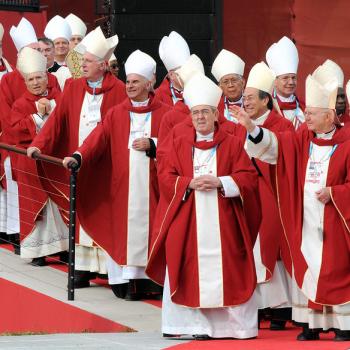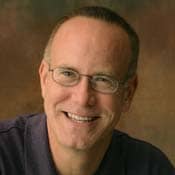I work at a one-of-a-kind retreat center in the Hill Country of Texas. Laity Lodge offers extraordinary beauty, restorative solitude, delicious food, and top-notch teaching. Each retreat includes outstanding musicians, from classical masters such as Stephen Clapp (violinist and former dean of Julliard) to contemporary favorites like Fernando Ortega, Sara Groves, and Ashley Cleveland.
But one of the most unusual features of each Laity Lodge retreat is our inclusion of art. The Cody Center, our musical performance hall, is also a gallery for fine visual art. Each year we highlight the work of several painters, photographers, sculptors, and poets, with shows that change every few months. Moreover, at every Laity Lodge retreat, an accomplished artist joins our resource team. This person is not only a talented professional, but also an enthusiastic teacher. During afternoon free time, retreat participants have the opportunity to take what is in effect a master class in which beginners are warmly welcomed and all people have the chance to grow in their artistic skills.
Learning from a master is a precious privilege. What a joy to observe close up how a master works, to receive personalized attention and direction. Sometimes, even highly accomplished people will take master classes from others in their discipline just to hone their skills and revitalize their vision.
Beginning with this column, I propose to offer a master class for pastors. I realize this sounds pretty arrogant, but please hear me out. I am not claiming to be the master. Rather, my role is something like the master's translator. I hope to examine the master's work, commenting on what I observe and making connections to your pastoral labors.
The master teacher for this class is the Apostle Paul. Though we tend to think of him as an evangelist, missionary, church planter, and theologian, in fact Paul served as a pastor for the churches he had founded. He did his pastoral work in person as well as through long-distance media (letters, visitors, prayers). From Paul's letters, we have actual examples of his pastoring from a distance. We can see how he cares for and shapes his communities through writing.
Finding out how Paul pastored his churches in person is a trickier enterprise. The Book of Acts describes his evangelistic efforts, but says relatively little about how he nurtured the churches that grew from his preaching. Furthermore, for the most part, Paul's letters contain relatively few references to what he actually did as a pastor of his churches.
Yet, there is one letter that, more than any other, features Paul's own description of his pastoral efforts: 1 Thessalonians. This relatively ignored letter of Paul, possibly the first letter he wrote, lacks the kind of juicy theological meat that feeds the appetites of theologians and preachers. Don't get me wrong. I'm not saying there isn't plenty of theology in 1 Thessalonians. But this small letter simply can't compare to Galatians or Romans when it comes to heavy theology. 1 Thessalonians does have something that all of the other Pauline letters lack, however. It features an in-depth account of Paul's pastoral relationship with one of his churches. In the first three chapters of 1 Thessalonians, Paul describes his actual ministry in more detail than in any other place in his writings.
So, 1 Thessalonians allows us to see Paul's ministry in 3-D (without the obnoxious glasses). On the one hand, we can examine what Paul actually did among the Thessalonians while he was present with them. On the other hand, we can see 1 Thessalonians itself as an example of pastoral work. Paul wrote this letter in order to encourage, instruct, and shape the small Christian community in Thessalonica. 1 Thessalonians is a pastoral letter that describes pastoral work. Like I said, 3-D.
This column introduces a series in which I will examine the pastoral work of Paul in relationship with the Thessalonians. This examination will constitute our "master class" for pastors. This is a subject I have wanted to write about for two decades. You see, what I'm offering here is a popular and practical version of my Ph.D. dissertation. In 1992, I finished a project I had been working on for several years. My thesis committee accepted as "worthy of acceptance" a work I called: "Images of Paul and the Thessalonians." Because I was not pursuing an academic career, I never sought to publish my dissertation. A few copies can be found in theological libraries, and one can buy a paper copy from ProQuest (formerly University Microfilms). But, for the most part, my work on Paul and the Thessalonians lives on only in a few obscure footnotes. I have no need to bring my dissertation back to life as an academic piece. But I do think what I learned in the course of my research and writing is relevant for pastors today. Much of what we'll find in 1 Thessalonians will be encouraging. Some will be challenging. Some will be surprising, even unsettling.
If this master class sounds like something you'd be interested in, I invite you to follow me as I seek to translate Paul's example into something relevant for your pastoral work. In preparation for this class, you might read 1 Thessalonians on your own, looking especially at how Paul pastored the church he had planted. If you stop and think, you'll find much more in the eighty-nine verses of 1 Thessalonians than you might expect.
8/9/2011 4:00:00 AM





